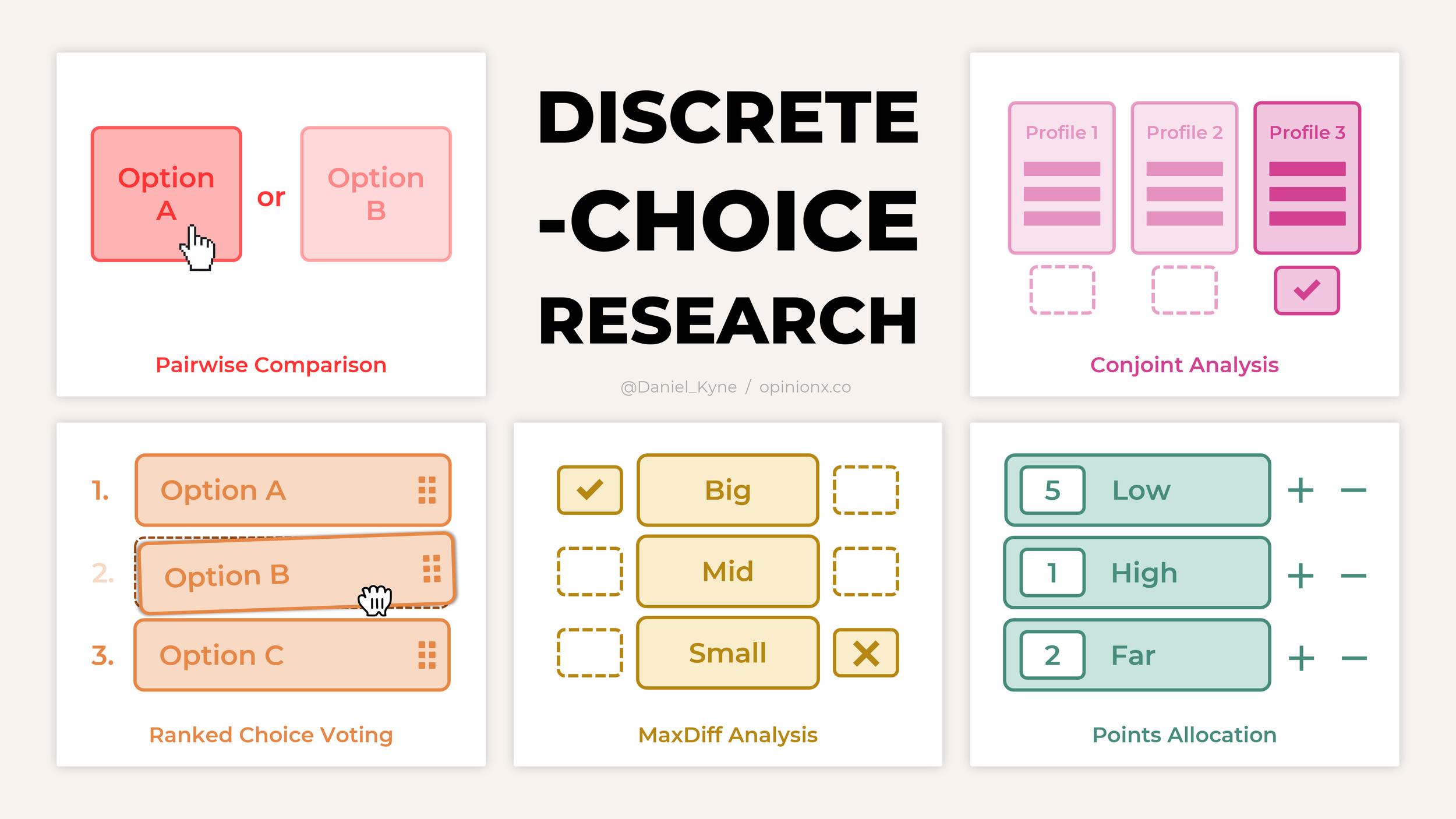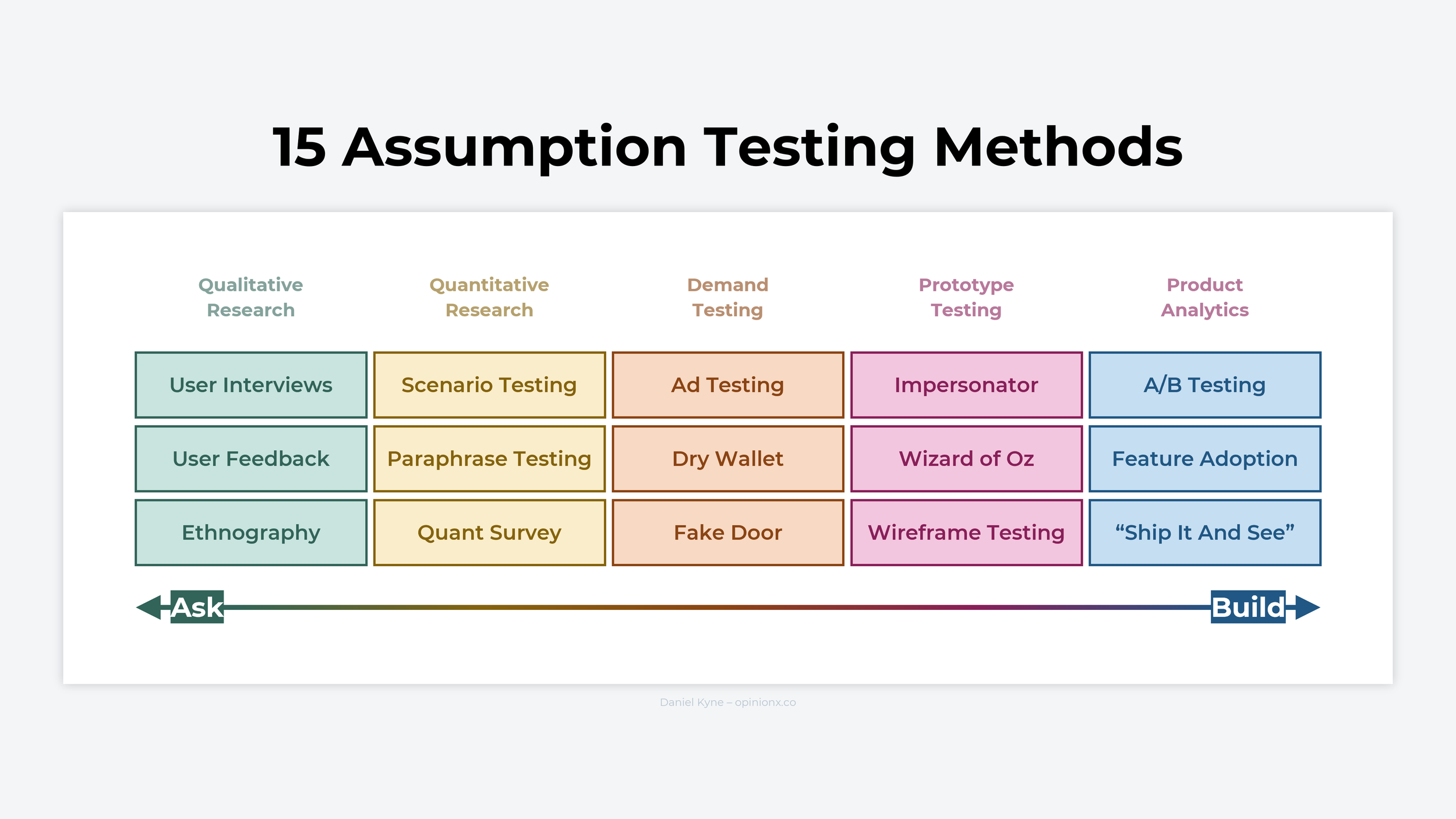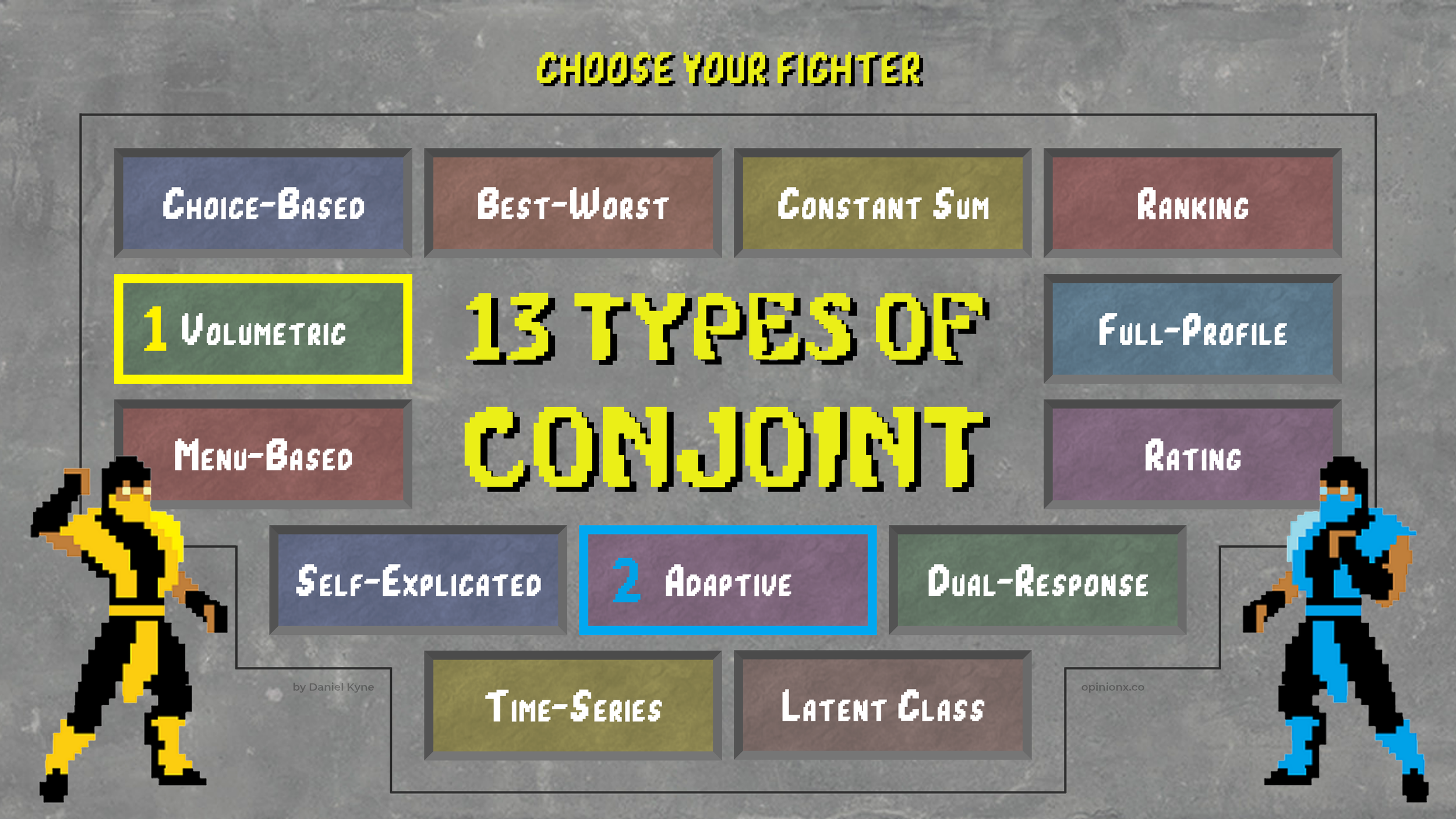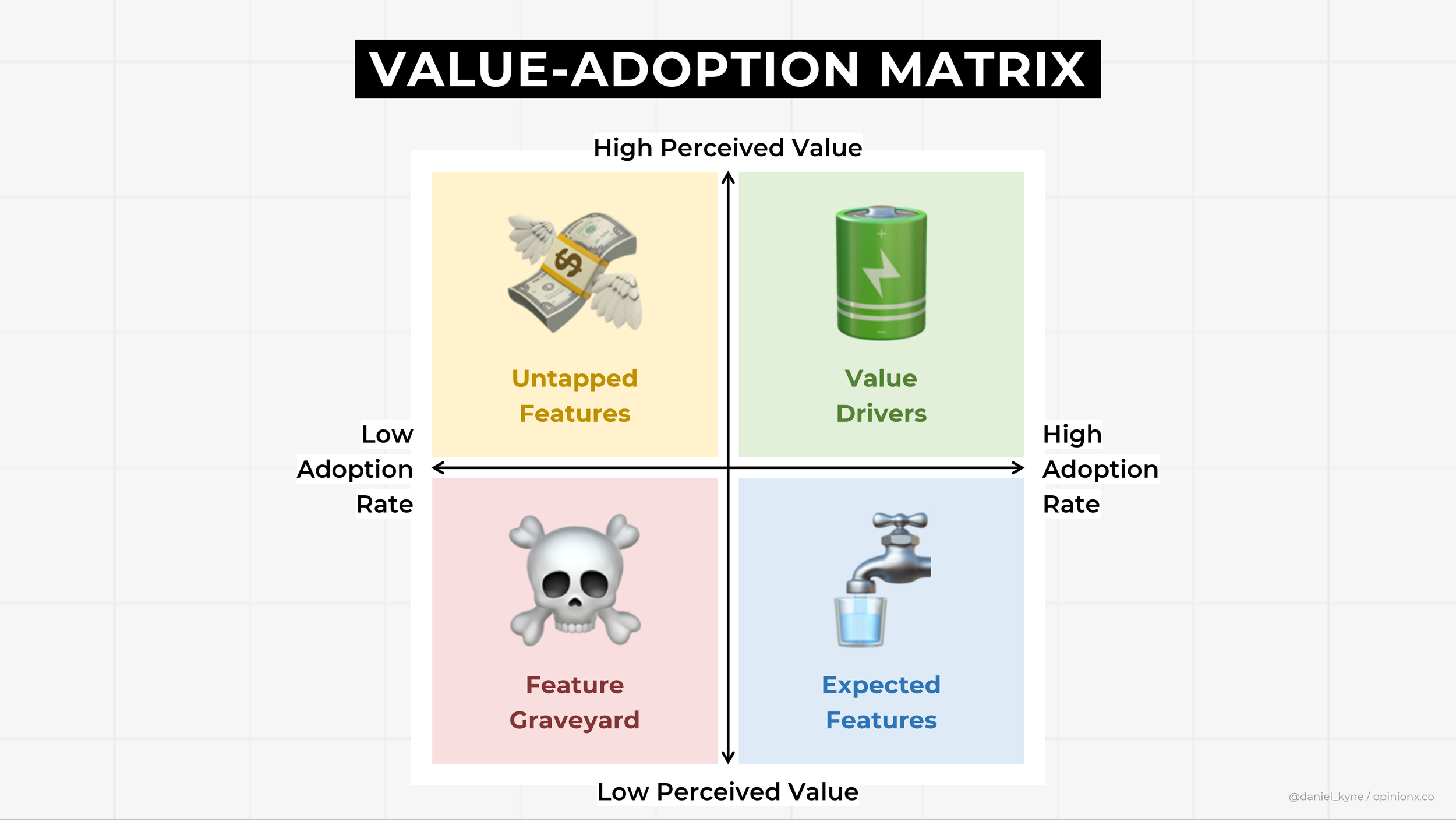
The Full-Stack Researcher
Guides, Case Studies, & Actionable Advice for Mixed-Methods User Research
How To Rank Any List of Names (Methods, Examples, Tools)
6 voting, polling, and survey methods you can use to turn a subjective set of names into a ranked list based on people’s strongest preferences (with interactive examples and results).
How to use PMF Surveys to reach Product/Market Fit Faster (Guide + Case Study)
Product Market Fit Surveys are a great way to benchmark your current level of PMF, but with some simple segmentation analysis techniques, they become a powerful user research and strategy tool for early-stage startups.
No More Limits: Giving OpinionX Away For Free [Our 2024 Strategy Explained]
We’re removing all limits on free surveys. Users can now create unlimited surveys with unlimited questions that engage unlimited participants — all for free. Here’s why we’re bullish about freemium for OpinionX.
Head-To-Head Pair Voting (Methods, Tools, Examples)
Head-to-head pairwise voting is one of the easiest ways to rank a list of options. This guide explains the best methods and most popular tools to use, along with some real examples.
Pairwise Ranking (Tools, Examples, Methods)
The Ultimate Guide To Pairwise Ranking — best methods, most popular tools, example pairwise comparison surveys, types of pair ranking, calculation formulas, and more.
Paired Comparison (Methods, Examples, Tools)
The Ultimate Guide To Paired Comparison — definition, best methods, most popular tools, example surveys, types of paired comparison, calculation formulas, and more.
Using Surveys for A/B Testing [Methods, Examples, Tools]
Online surveys are a fast and cheap way to run rapid A/B tests for images, ideas, ad copy, sales messaging, problem statements. Choose between comparative preference testing formats or monadic surveys, and plan ahead for respondent segmentation afterwards.
How Labster prioritizes which user problems to solve next
How do you figure out what to build next when customers are all shouting for different things? Tudor, a UX Researcher at Series C scaleup Labster, learned first hand why you can't always listen to your loudest customers…
Discrete Choice Model: Survey Research & Analysis Guide
Discrete Choice Modeling is a category of research that measures the relative importance of a set of options according to a group of people, including conjoint, maxdiff, pairwise comparison, and more.
What is Psychographic Segmentation [Guide & Examples]
Psychographic customer segmentation identifies groups of customers with a similar way of thinking about a topic or issue. Including 5 research methods, 6-step process, a real B2B case study, and how to run a psychographic segmentation survey.
15 Assumption Testing Methods For Product Management Teams
How to translate product ideas into their underlying assumptions, identify the riskiest assumption, design an assumption test, pick from 15 assumption testing methods, and define the success and failure criteria for that experiments.
Never Say Usually: How To Ask Questions In User Interviews
Customer discovery is about uncovering the unmet needs, pains and desires driving people’s behavior. The best way to do that? Ask good questions. Here are some suggestions…
The Most Misunderstood Research Method In All The Land
Everyone loves conjoint analysis — even if they don't really understand it. Here's what conjoint is actually for, how it works, and what most people mistake about it.
13 Types of Conjoint Analysis Explained (With Image Examples)
Explanations (with examples) for the 13 most popular conjoint analysis methods, including types like choice-based, best-worst, ranking, self-explicated, volumetric, menu-based, adaptive, and more.
8 Alternatives To Conjoint Analysis For User Research
Conjoint analysis is an advanced research method for measuring attribute importance in a product mix. It’s complicated, expensive, and can only be used in a handful of research scenarios. Here are 8 examples of alternative research methods to consider instead.
How To Calculate Conjoint Analysis Results [8 Steps]
8-step guide explaining how conjoint data is collected, analyzed, and manually computed (with formulas) to calculate part-worth utility scores for each attribute and level in a conjoint analysis survey.
When To Use Conjoint Analysis [5 Criteria & 10 Examples]
Conjoint analysis is one of the most misused and misunderstood research methods. This guide covers 5 criteria that must be met to justify using conjoint and 10 examples of when conjoint analysis does or doesn’t suit a research scenario.
Comparing The Top 10 Most Popular Conjoint Analysis Tools (Free vs Paid)
I reviewed the 10 most popular conjoint analysis tools, comparing their pricing (free vs paid), functionality, usability, and more. Includes Qualtrics, Conjointly, Sawtooth, OpinionX, SurveyMonkey, and more.
The Value-Adoption Matrix: How To Find Untapped Opportunities In Your Existing Features
Which of my features do customers think enable the most important capabilities but have been adopted by the lowest percentage of users? The answer to this question is an untapped goldmine of opportunities in your existing product. Here’s how to find them…
4 Alternative Survey Methods To MaxDiff Analysis (Examples)
MaxDiff is a great research method for understanding people’s priorities, but all the tools with MaxDiff Analysis are damn expensive. Here are 4 alternative Best-Worst Scale methods you can use instead of MaxDiff Analysis.



![No More Limits: Giving OpinionX Away For Free [Our 2024 Strategy Explained]](https://images.squarespace-cdn.com/content/v1/5e22fb8d8524a16d5bd5683c/1706624340108-MAW6DN8K6ZHSSTVLHOCU/Unlimited+Free+Participants.png)



![Using Surveys for A/B Testing [Methods, Examples, Tools]](https://images.squarespace-cdn.com/content/v1/5e22fb8d8524a16d5bd5683c/1702477666020-LIDLTT4ANCMELA0C3VSU/Using+online+surveys+for+rapid+a-b+testing+experiments+optimization+preference+test+comparison.png)


![What is Psychographic Segmentation [Guide & Examples]](https://images.squarespace-cdn.com/content/v1/5e22fb8d8524a16d5bd5683c/1699885107600-TQEISLOL3D62VVK6ZWQP/Psychographic+Segmentation+Guide+How+To+Method+Examples+Process+Research+UX+User+Customer.png)





![How To Calculate Conjoint Analysis Results [8 Steps]](https://images.squarespace-cdn.com/content/v1/5e22fb8d8524a16d5bd5683c/1691430551484-X7AY2CQZI3F2PWB0TL1S/How+To+Calculate+Conjoint+Analysis+Results+Scores+Utility+Part-Worths+Data+Linear+Regression+Conjoint+Survey.png)
![When To Use Conjoint Analysis [5 Criteria & 10 Examples]](https://images.squarespace-cdn.com/content/v1/5e22fb8d8524a16d5bd5683c/1691433503009-1NGZP8LZTKIIU27YZQQ5/What+is+Conjoint+Analysis.png)


